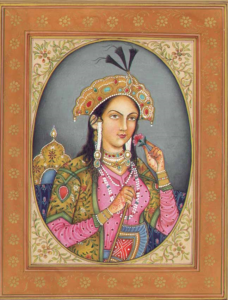 On this day in 1631, Empress consort of the Mughal Empire Mumtaz Mahal (Persian: ممتاز محل ) died in Burhanpur, Deccan (present-day Madhya Pradesh), during the birth of her fourteenth child, at the age of 38. Born Arjumand Banu on 27 April 1593 in Agra, India. She was the Empress consort from 19 January 1628 to 17 June 1631 as the chief consort of the Mughal emperor Shah Jahan. The Taj Mahal in Agra, often cited as one of the Wonders of the World, was commissioned by her husband to act as her tomb.
On this day in 1631, Empress consort of the Mughal Empire Mumtaz Mahal (Persian: ممتاز محل ) died in Burhanpur, Deccan (present-day Madhya Pradesh), during the birth of her fourteenth child, at the age of 38. Born Arjumand Banu on 27 April 1593 in Agra, India. She was the Empress consort from 19 January 1628 to 17 June 1631 as the chief consort of the Mughal emperor Shah Jahan. The Taj Mahal in Agra, often cited as one of the Wonders of the World, was commissioned by her husband to act as her tomb.
Mumtaz Mahal was born to a family of Persian nobility. She was the daughter of Abu’l-Hasan Asaf Khan, a wealthy Persian noble who held high office in the Mughal Empire, and the niece of Empress Nur Jahan, the chief wife of Emperor Jahangir and the power behind the emperor. She was married at the age of 19 on 30 April 1612 to Prince Khurram,later known by his regnal name Shah Jahan, who conferred upon her the title “Mumtaz Mahal” (Persian: the exalted one of the palace). Although betrothed to Shah Jahan since 1607, she ultimately became his second wife in 1612.

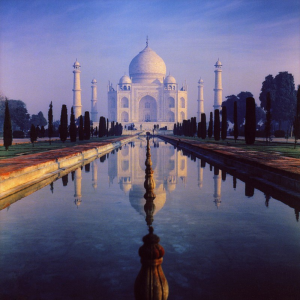 The Final Footprint
The Final Footprint
Her body was buried at Burhanpur in a walled pleasure garden known as Zainabad originally constructed by Shah Jahan’s uncle Daniyal on the bank of the Tapti River. The contemporary court chroniclers paid an unusual amount of attention to Mumtaz Mahal’s death and Shah Jahan’s grief at her demise. In the immediate aftermath of his bereavement, the emperor was reportedly inconsolable. Apparently, after her death, he went into secluded mourning for a year. When he appeared again, his hair had turned white, his back was bent, and his face worn. Mumtaz’s eldest daughter, Jahanara Begum, gradually brought her father out of grief and took her mother’s place at court.
Burhanpur was never intended by her husband as his wife’s final resting spot. As a result, her body was disinterred in December 1631 and transported in a golden casket escorted by her son Shah Shuja and the deceased empress’s head lady-in-waiting back to Agra. There it was interred in a small building on the banks of the Yamuna River. Shah Jahan stayed behind in Burhanpur to conclude the military campaign that had originally brought him to the region. While there, he began planning the design and construction of a suitable mausoleum and funerary garden in Agra for his wife. It was a task that would take 22 years to complete: the Taj Mahal.
The Taj Mahal was commissioned by Shah Jahan to be built as a mausoleum for Mumtaz Mahal. It is seen as an embodiment of undying love and marital devotion. English poet Sir Edwin Arnold describes it as “Not a piece of architecture, as other buildings are, but the proud passion of an emperor’s love wrought in living stones.” The bodies of Mumtaz and Shah Jahan are placed in a relatively plain crypt beneath the inner chamber with their faces turned to the right and towards Mecca.
The Ninety Nine Names of God are found as calligraphic inscriptions on the sides of the tomb of Mumtaz Mahal in the crypt including, “O Noble, O Magnificent, O Majestic, O Unique, O Eternal, O Glorious…”. There are many theories about the origin of the name of this tomb and one of them suggests that ‘Taj’ is an abbreviation of the name Mumtaz. European travelers, such as François Bernier, who observed its construction, were among the first to call it the Taj Mahal. Since it is unlikely that they came up with the name, it is suggested that they might have picked it up from the locals of Agra who called the Empress ‘Taj Mahal’ and thought the tomb was named after her and the name began to be used interchangeably. However, there is no firm evidence to suggest this. Shah Jahan had not intended to entomb another person in the Taj Mahal; however, Aurangzeb had Shah Jahan buried next to the tomb of Mumtaz Mahal rather than build a separate tomb for his father. This is evident from the asymmetrical placement of Shah Jahan’s grave on one side of his wife’s grave which is in the centre.
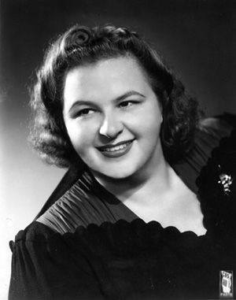 On this day in 1986 singer Kate Smith died from complictions of diabetes in Raleigh, North Carolina at the age of 79. Born Kathryn Elizabeth Smith on 1 May 1907 in Greenville, Virginia. She was a popular icon of the Depression and World War II eras. Perhaps best known for her rendition of Irving Berlin’s God Bless America, which was played during the seventh inning stretch of most New York Yankee home games from 2009 until April 2019, when the practice was discontinued amid controversy surrounding her 1931 recordings of “That’s Why Darkies Were Born” and “Pickaninny Heaven.” A statue of Smith oustide the NHL’s Philadelphia Flyers stadium was removed on April 21, 2019. Her family responded by denying the racism allegations. Those against the discontinuation of using Kate Smith’s works have cited the satirical nature of the song “That’s Why Darkies Were Born”, and the fact that it was also popularized by Paul Robeson. The song “Pickaninny Heaven” is from the movie Hello, Everybody!, one of whose writers was Fannie Hurst, a well-known advocate for African American equality.
On this day in 1986 singer Kate Smith died from complictions of diabetes in Raleigh, North Carolina at the age of 79. Born Kathryn Elizabeth Smith on 1 May 1907 in Greenville, Virginia. She was a popular icon of the Depression and World War II eras. Perhaps best known for her rendition of Irving Berlin’s God Bless America, which was played during the seventh inning stretch of most New York Yankee home games from 2009 until April 2019, when the practice was discontinued amid controversy surrounding her 1931 recordings of “That’s Why Darkies Were Born” and “Pickaninny Heaven.” A statue of Smith oustide the NHL’s Philadelphia Flyers stadium was removed on April 21, 2019. Her family responded by denying the racism allegations. Those against the discontinuation of using Kate Smith’s works have cited the satirical nature of the song “That’s Why Darkies Were Born”, and the fact that it was also popularized by Paul Robeson. The song “Pickaninny Heaven” is from the movie Hello, Everybody!, one of whose writers was Fannie Hurst, a well-known advocate for African American equality.
Smith called for racial tolerance in 1945 in an address on CBS Radio, saying, “Race hatreds, social prejudices, religious bigotry, they are the diseases that eat away the fibers of peace.” She went on to say that it is up to us to tolerate one another in order to achieve peace.
Smith never married.
 The Final Footprint – Smith is entombed in a private mausoleum at Saint Agnes Cemetery in Lake Placid, New York. Requiescat in pace.
The Final Footprint – Smith is entombed in a private mausoleum at Saint Agnes Cemetery in Lake Placid, New York. Requiescat in pace.
| Cyd Charisse |
 |
|
On this day in 2008, dancer and actress Cyd Charisse died of a heart attack at Cedars-Sinai Medical Center in Los Angeles at the age of 86. Born Tula Ellice Finklea on March 8, 1922 in Amarillo, Texas.
After recovering from polio as a child and studying ballet, Charisse entered films in the 1940s. Her roles usually focused on her abilities as a dancer, and she was paired with Fred Astaire and Gene Kelly; her films include Singin’ in the Rain (1952), The Band Wagon (1953), Brigadoon with Kelly and Van Johnson (1954) and Silk Stockings (1957). She stopped dancing in films in the late 1950s, but continued acting in film and television, and in 1992 made her Broadway debut. In her later years, she discussed the history of the Hollywood musical in documentaries, and was featured in That’s Entertainment! III in 1994. She was awarded the National Medal of the Arts and Humanities in 2006.
Charisse’s first husband, whose surname she kept, was Nico Charisse (March 1906 – April 1970). They were married in 1939 and had a son before divorcing in 1947. In 1948, Charisse married singer Tony Martin, and remained married until her death in 2008. They had a son, Tony Martin, Jr. (August 28, 1950 – April 10, 2011).
The Final Footprint

Charisse in 1987, by Allan Warren
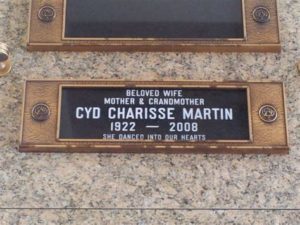
Her cremains are inurned at Hillside Memorial Park Cemetery, a Jewish cemetery in Culver City, California, following a Methodist ceremony. Other notable Final Footprints at Hillside Memorial include; Jack Benny, Milton Berle, Lorne Greene, Moe Howard, Al Jolson, Michael Landon, Leonard Nimoy, Suzanne Pleshette, Dinah Shore, and Shelley Winters.
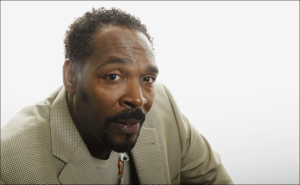 On this day in 2012 construction worker turned writer Rodney King died in his swimming pool at his home in Rialto, California, from an accidental drowning at the age of 47. Born Rodney Glen King on April 2, 1965 in Sacramento, California. Perhaps best known for surviving an act of police brutality by the Los Angeles Police Department. On March 3, 1991, King was beaten by LAPD officers after a high-speed chase during his arrest for drunk driving on I-210. A civilian, George Holliday, filmed the incident from his nearby balcony and sent the footage to local news station KTLA. The footage clearly showed an unarmed King on the ground being beaten after initially evading arrest. The incident was covered by news media around the world and caused a public furor.
On this day in 2012 construction worker turned writer Rodney King died in his swimming pool at his home in Rialto, California, from an accidental drowning at the age of 47. Born Rodney Glen King on April 2, 1965 in Sacramento, California. Perhaps best known for surviving an act of police brutality by the Los Angeles Police Department. On March 3, 1991, King was beaten by LAPD officers after a high-speed chase during his arrest for drunk driving on I-210. A civilian, George Holliday, filmed the incident from his nearby balcony and sent the footage to local news station KTLA. The footage clearly showed an unarmed King on the ground being beaten after initially evading arrest. The incident was covered by news media around the world and caused a public furor.
At a press conference, announcing the fourteen officers involved would be disciplined and three would face criminal charges, Los Angeles police chief Daryl Gates said: “We believe the officers used excessive force taking him into custody. In our review we find that officers struck him with batons between fifty-three and fifty-six times.” No charges were filed against the 25-year-old King. On his release he spoke to reporters from his wheelchair, with his injuries evident: a broken right leg in a cast, his face badly cut and swollen, bruises on his body and a burn area to his chest where he had been jolted with a 50,000-volt stun gun. He described how he had knelt, spread his hands out and tried to move slowly so as not to make any ‘stupid move’, being hit across the face by a billy club and shocked. He said he was scared for his life as they drew down on him. (Dallas chief of police William Rathburn ordered that all police watch the video as an instructional tape on how not to behave.)
Four officers were eventually tried on charges of use of police brutality. Of these, three were acquitted, and the jury failed to reach a verdict on one charge for the fourth. Within hours of the acquittals, the 1992 Los Angeles riots started, sparked by outrage among racial minorities over the trial’s verdict and related, longstanding social issues. The rioting lasted six days and killed 63 people with 2,383 more injured; it ended only after the California Army National Guard, the United States Army and the United States Marine Corps provided reinforcements to re-establish control. The federal government prosecuted a separate civil rights case, obtaining grand jury indictments of the four officers for violations of King’s civil rights. Their trial in a federal district court ended on April 16, 1993, with two of the officers being found guilty and sentenced to serve prison terms. The other two were acquitted of the charges. In a separate civil lawsuit in 1994, the city of Los Angeles awarded King $3.8 million in damages.
In 2012, King was found dead in his swimming pool two months after publishing his memoir; the coroner found evidence of alcohol and other drugs in his system and ruled these and his history of heart problems had likely resulted in an accidental drowning.
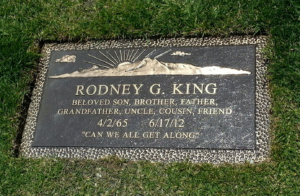 The Final Footprint
The Final Footprint
King died 28 years to the day after his father, Ronald King, was found dead in his bathtub in 1984. Rev. Al Sharpton delivered the eulogy at King’s funeral. King is interred at Forest Lawn Memorial Park in Los Angeles County, California. Other notable final footprints at Hollywood Hills include; Gene Autry, Albert “Cubby” Broccoli, David Carradine, Scatman Crothers, Bette Davis, Sandra Dee, Ronnie James Dio, Michael Clarke Duncan, Carrie Fisher, Bobby Fuller, Andy Gibb, Michael Hutchence, Jill Ireland, Al Jarreau, Buster Keaton, Lemmy Kilmister, Rodney King, Jack LaLanne, Nicolette Larson, Liberace, Strother Martin, Jayne Meadows, Brittany Murphy, Ricky Nelson, Bill Paxton, Brock Peters, Freddie Prinze, Lou Rawls, Debbie Reynolds, Telly Savalas, John Singleton, Lee Van Cleef, and Paul Walker.
#RIP #OTD in 2019 artist, author, actress, fashion designer, heiress, socialite Gloria Vanderbilt died at her home in Manhattan of stomach cancer, aged 95. Cooper plot in the Vanderbilt Family Cemetery on Staten Island, New York
Have you planned yours yet?
Follow TFF on twitter @RIPTFF
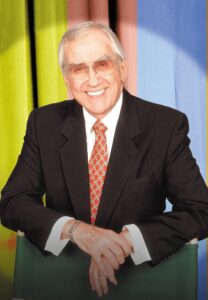 On this day in 2009, United States Marine Corps veteran, comedian, game show host and announcer, “The Human Laugh Track”, “Toymaker to the King”, Ed McMahon died at the Ronald Reagan UCLA Medical Center in Los Angeles at the age of 86. Born Edward Peter McMahon, Jr. on 6 March 1923 in Detroit, Michigan and raised in Lowell, Massuchusetts. Perhpaps best known as Johnny Carson’s sidekick and the host of The Tonight Show from 1962 to 1992. He also co-hosted the Jerry Lewis Labor Day Telethon and the Macy’s Thanksgiving Day Parade. McMahon introduced each night’s episode of The Tonight Show with a drawn-out “Heeeeeere’s Johnny!” and served as the on air sounding board for Carson’s jokes. McMahon was married three times; Alyce Ferrill (1945-1974 divorce), Victoria Valentine (1976-1989 divorce), Pam Hurn (1992-2009 his death).
On this day in 2009, United States Marine Corps veteran, comedian, game show host and announcer, “The Human Laugh Track”, “Toymaker to the King”, Ed McMahon died at the Ronald Reagan UCLA Medical Center in Los Angeles at the age of 86. Born Edward Peter McMahon, Jr. on 6 March 1923 in Detroit, Michigan and raised in Lowell, Massuchusetts. Perhpaps best known as Johnny Carson’s sidekick and the host of The Tonight Show from 1962 to 1992. He also co-hosted the Jerry Lewis Labor Day Telethon and the Macy’s Thanksgiving Day Parade. McMahon introduced each night’s episode of The Tonight Show with a drawn-out “Heeeeeere’s Johnny!” and served as the on air sounding board for Carson’s jokes. McMahon was married three times; Alyce Ferrill (1945-1974 divorce), Victoria Valentine (1976-1989 divorce), Pam Hurn (1992-2009 his death).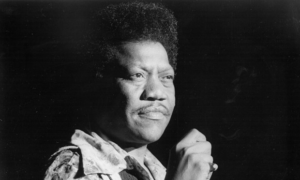 On this day in 2013 blues singer, the Lion of the Blues, the Sinatra of the Blues, Bobby “Blue” Bland died at his home in Germantown, Tennessee at the age of 83. Born Robert Calvin Brooks on January 27, 1930 in Barretville, Tennessee.
On this day in 2013 blues singer, the Lion of the Blues, the Sinatra of the Blues, Bobby “Blue” Bland died at his home in Germantown, Tennessee at the age of 83. Born Robert Calvin Brooks on January 27, 1930 in Barretville, Tennessee.
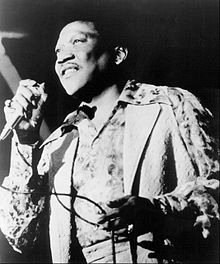
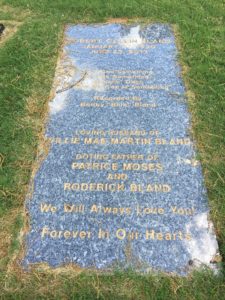

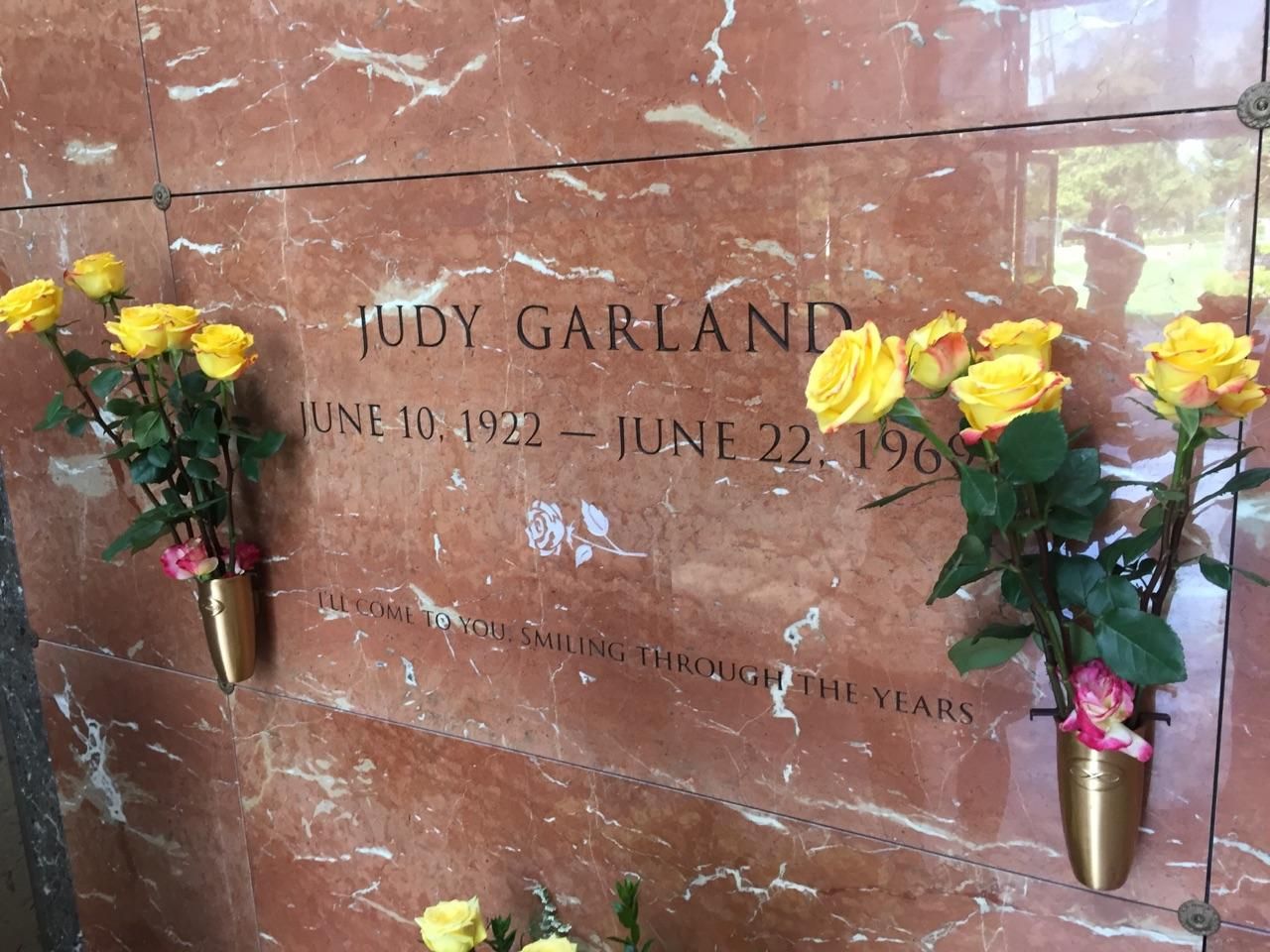
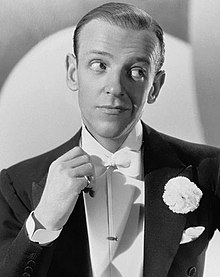



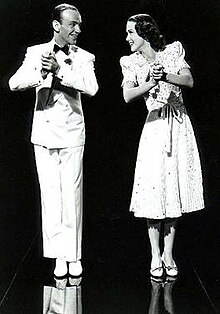





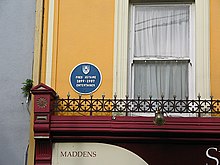



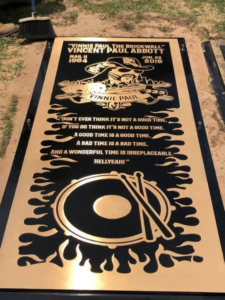
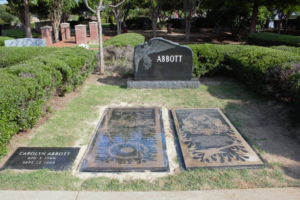
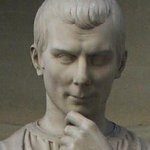
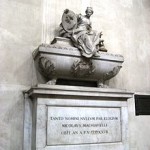
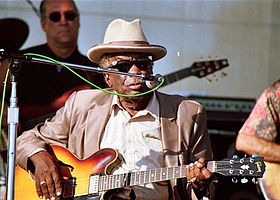
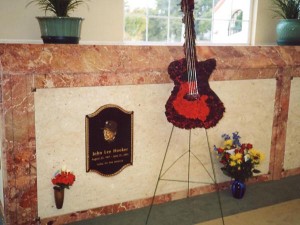
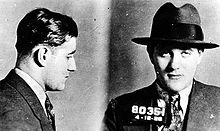
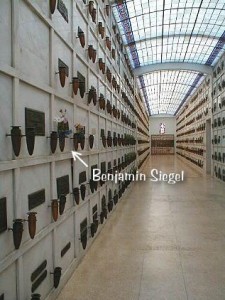
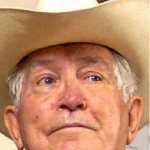
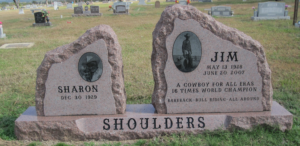
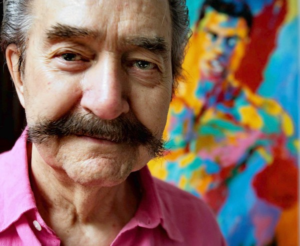


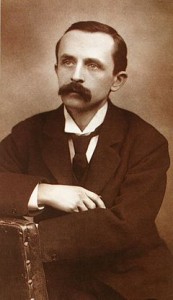 On this day in 1937, author and dramatist, J. M. Barrie died of pneumonia in London at the age of 77. Born James Matthew Barrie on 9 May 1860 in in Kirriemuir, Angus, Scotland. Perhaps best remembered as the author of Peter Pan, or The Boy Who Wouldn’t Grow Up (1904) the play about the ageless boy and an ordinary girl named Wendy who have adventures in the fantasy setting of Neverland. The play was developed by Barrie into the 1911 novel Peter and Wendy. George Bernard Shaw described the play as “ostensibly a holiday entertainment for children but really a play for grown-up people.”
On this day in 1937, author and dramatist, J. M. Barrie died of pneumonia in London at the age of 77. Born James Matthew Barrie on 9 May 1860 in in Kirriemuir, Angus, Scotland. Perhaps best remembered as the author of Peter Pan, or The Boy Who Wouldn’t Grow Up (1904) the play about the ageless boy and an ordinary girl named Wendy who have adventures in the fantasy setting of Neverland. The play was developed by Barrie into the 1911 novel Peter and Wendy. George Bernard Shaw described the play as “ostensibly a holiday entertainment for children but really a play for grown-up people.”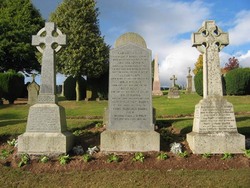 The Final Footprint – Barrie is interred in the Barrie and Ogilivie family plot in Kirriemuir Cemetery. The family plot is marked by three large upright markers. A bronze Peter Pan statue was erected in Kensington Gardens, London. Barrie was portrayed in the semi-biographical film, Finding Neverland (2004), by Johnny Depp. The film was nominated for an Oscar, as was Depp, and also stars Kate Winslet and Hoffman. Neverland Valley Ranch was named by Michael Jackson after Barrie’s Neverland.
The Final Footprint – Barrie is interred in the Barrie and Ogilivie family plot in Kirriemuir Cemetery. The family plot is marked by three large upright markers. A bronze Peter Pan statue was erected in Kensington Gardens, London. Barrie was portrayed in the semi-biographical film, Finding Neverland (2004), by Johnny Depp. The film was nominated for an Oscar, as was Depp, and also stars Kate Winslet and Hoffman. Neverland Valley Ranch was named by Michael Jackson after Barrie’s Neverland.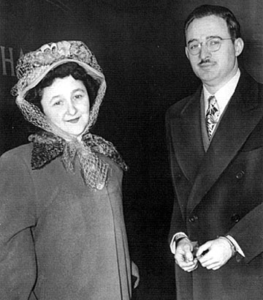
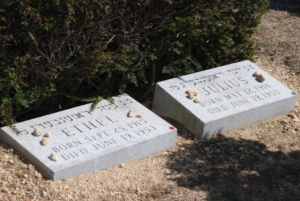
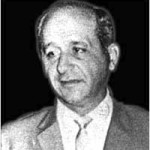 On this day in 1975, Sicilian American mobster and boss of the Chicago Outfit from 1957–1966, “Momo”, “Mooney”, “Sam the Cigar”, “Sammy”, Sam Giancana died from multiple gunshot wounds in his home in Oak Park, Illinois at the age of 67. Giancana was killed shortly before he was scheduled to appear before a U. S. Senate committee investigating supposed CIA and Cosa Nostra collusion in plots to assassinate President John F. Kennedy. Born Salvatore Giangana to Sicilian immigrants in Little Italy, Chicago.
On this day in 1975, Sicilian American mobster and boss of the Chicago Outfit from 1957–1966, “Momo”, “Mooney”, “Sam the Cigar”, “Sammy”, Sam Giancana died from multiple gunshot wounds in his home in Oak Park, Illinois at the age of 67. Giancana was killed shortly before he was scheduled to appear before a U. S. Senate committee investigating supposed CIA and Cosa Nostra collusion in plots to assassinate President John F. Kennedy. Born Salvatore Giangana to Sicilian immigrants in Little Italy, Chicago.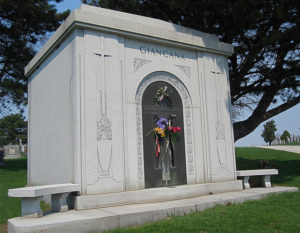
 On this day in 2013, actor James Gandolfini died of an apparent heart attack in Rome at the age of 51. Born James Joseph Gandolfini, Jr. on 18 September 1961 in Westwood, New Jersey. Perhaps best known for his role in The Sopranos as Tony Soprano, a troubled crime boss struggling to balance his family life and career in the Mafia. Gandolfini garnered enormous praise for this role, winning both the Primetime Emmy Award for Outstanding Lead Actor in a Drama Series and Screen Actors Guild Award for Outstanding Performance by a Male Actor in a Drama Series three times.
On this day in 2013, actor James Gandolfini died of an apparent heart attack in Rome at the age of 51. Born James Joseph Gandolfini, Jr. on 18 September 1961 in Westwood, New Jersey. Perhaps best known for his role in The Sopranos as Tony Soprano, a troubled crime boss struggling to balance his family life and career in the Mafia. Gandolfini garnered enormous praise for this role, winning both the Primetime Emmy Award for Outstanding Lead Actor in a Drama Series and Screen Actors Guild Award for Outstanding Performance by a Male Actor in a Drama Series three times.


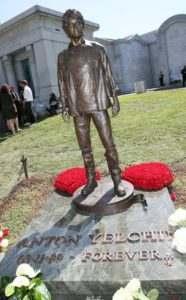
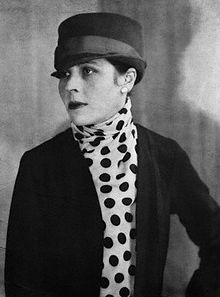
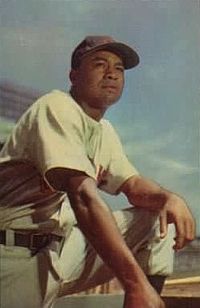
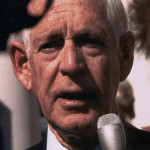
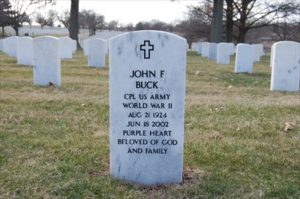












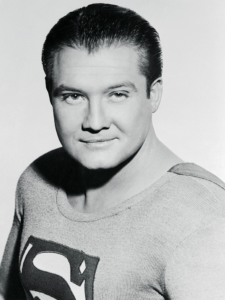
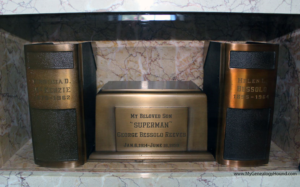
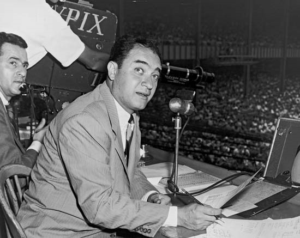
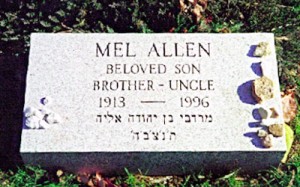
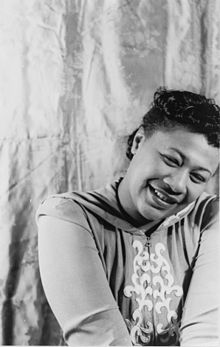
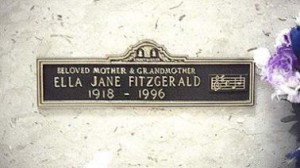 The Final Footprint – Fitzgerald is entombed in the Sunset Memorial Garden Mausoleum, Sanctuary of the Bells, in Inglewood Park Cemetery in Inglewood, California. Other notable Final Footprints at Inglewood Park include; Ray Charles, Betty Grable, Etta James, Robert Kardashian, Gypsy Rose Lee, Billy Preston, Cesar Romero, Big Mama Thornton, T-Bone Walker, and Syreeta Wright.
The Final Footprint – Fitzgerald is entombed in the Sunset Memorial Garden Mausoleum, Sanctuary of the Bells, in Inglewood Park Cemetery in Inglewood, California. Other notable Final Footprints at Inglewood Park include; Ray Charles, Betty Grable, Etta James, Robert Kardashian, Gypsy Rose Lee, Billy Preston, Cesar Romero, Big Mama Thornton, T-Bone Walker, and Syreeta Wright.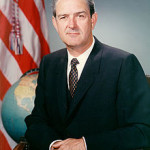
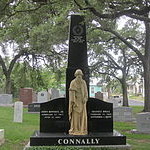 The Final Footprint – His funeral was held at the First United Methodist Church of Austin where he and his wife, Nellie Connally, had been members since their days living one block to the south in the Texas Governors Mansion, 1963–1969. The Connallys are interred at the Texas State Cemetery in Austin. Other notable final footprints at Texas State Cemetery include; Stephen F. Austin, J. Frank Dobie, Barbara Jordan, Tom Landry (cenotaph), James A. Michener (cenotaph), Ann Richards, Edwin “Bud” Shrake, Big Foot Wallace, and Walter Prescott Webb.
The Final Footprint – His funeral was held at the First United Methodist Church of Austin where he and his wife, Nellie Connally, had been members since their days living one block to the south in the Texas Governors Mansion, 1963–1969. The Connallys are interred at the Texas State Cemetery in Austin. Other notable final footprints at Texas State Cemetery include; Stephen F. Austin, J. Frank Dobie, Barbara Jordan, Tom Landry (cenotaph), James A. Michener (cenotaph), Ann Richards, Edwin “Bud” Shrake, Big Foot Wallace, and Walter Prescott Webb.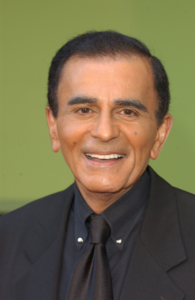


 On this day in 1837, Italian poet, essayist, philosopher, and philologist, Giacomo Leopardi died in Naples at the age of 38 during the cholera epidemic. Born Giacomo Taldegardo Francesco di Sales Saverio Pietro Leopardi on 29 June 1798 in Recanati, Papal States. Although he lived in a secluded town in the ultra-conservative Papal States, he came in touch with the main thoughts of the Enlightenment, and by his own literary evolution, created a remarkable and renowned poetic work, related to the Romantic era.
On this day in 1837, Italian poet, essayist, philosopher, and philologist, Giacomo Leopardi died in Naples at the age of 38 during the cholera epidemic. Born Giacomo Taldegardo Francesco di Sales Saverio Pietro Leopardi on 29 June 1798 in Recanati, Papal States. Although he lived in a secluded town in the ultra-conservative Papal States, he came in touch with the main thoughts of the Enlightenment, and by his own literary evolution, created a remarkable and renowned poetic work, related to the Romantic era.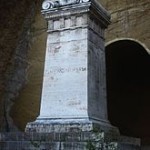 The Final Footprint – Thanks to Antonio Ranieri’s intervention with the authorities, Leopardi’s remains were prevented from being ignominiously buried in the common grave (as the strict hygienic regulations of the time required) and he was entombed in the atrium of the church of San Vitale at Fuorigrotta. In 1939 his tomb, moved to the Parco Virgiliano, was declared a national monument.
The Final Footprint – Thanks to Antonio Ranieri’s intervention with the authorities, Leopardi’s remains were prevented from being ignominiously buried in the common grave (as the strict hygienic regulations of the time required) and he was entombed in the atrium of the church of San Vitale at Fuorigrotta. In 1939 his tomb, moved to the Parco Virgiliano, was declared a national monument.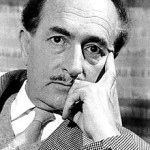 On this day in 1968, Italian author and poet, 1959 recipient of the Nobel Prize for Literature “for his lyrical poetry, which with classical fire expresses the tragic experience of life in our own times”, Salvatore Quasimodo died from a cerebral hemorrhage in a hospital in Naples at the age of 66. Born on 20 August 1901 in Modica, Sicily. Along with Giuseppe Ungaretti and Eugenio Montale, he is one of the foremost Italian poets of the 20th century.
On this day in 1968, Italian author and poet, 1959 recipient of the Nobel Prize for Literature “for his lyrical poetry, which with classical fire expresses the tragic experience of life in our own times”, Salvatore Quasimodo died from a cerebral hemorrhage in a hospital in Naples at the age of 66. Born on 20 August 1901 in Modica, Sicily. Along with Giuseppe Ungaretti and Eugenio Montale, he is one of the foremost Italian poets of the 20th century.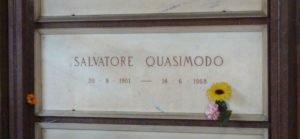 The Final Footprint – He was interred in the Cimitero Monumentale in Milan.
The Final Footprint – He was interred in the Cimitero Monumentale in Milan.



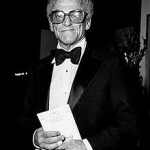 On this day in 1986, American lyricist and librettist, who in collaboration with Frederick Loewe, created some of the world’s most popular and enduring works of musical theatre for both the stage and on film, Alan Jay Lerner died of lung cancer in Manhattan at the age of 67. Born on 31 August 1918 in New York City. He won three Tony Awards and three Academy Awards, among other honors. My favorite Lerner and Loewe musicals are My Fair Lady (1956) and Camelot (1960). He married eight times: Ruth Boyd (1940–1947), singer Marion Bell (1947–1949), actress Nancy Olson (1950–1957), lawyer Micheline Muselli Pozzo di Borgo (1957–1965), editor Karen Gunderson (1966–1974), Sandra Payne (1974–1976), Nina Bushkin (1977–1981) and Liz Robertson (1981–1986 his death).
On this day in 1986, American lyricist and librettist, who in collaboration with Frederick Loewe, created some of the world’s most popular and enduring works of musical theatre for both the stage and on film, Alan Jay Lerner died of lung cancer in Manhattan at the age of 67. Born on 31 August 1918 in New York City. He won three Tony Awards and three Academy Awards, among other honors. My favorite Lerner and Loewe musicals are My Fair Lady (1956) and Camelot (1960). He married eight times: Ruth Boyd (1940–1947), singer Marion Bell (1947–1949), actress Nancy Olson (1950–1957), lawyer Micheline Muselli Pozzo di Borgo (1957–1965), editor Karen Gunderson (1966–1974), Sandra Payne (1974–1976), Nina Bushkin (1977–1981) and Liz Robertson (1981–1986 his death). 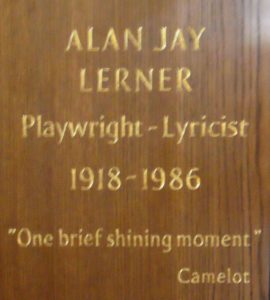
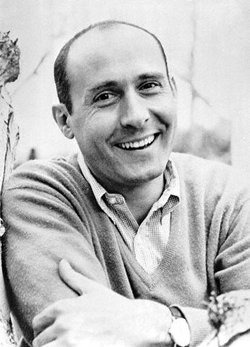 On this day in 1994, United States Army veteran, composer, conductor and arranger, Grammy, Emmy and Oscar winner, Henry Mancini, died of pancreatic cancer in Los Angeles at the age of 70. Born Enrico Nicola Mancini on 16 April 1924 in Cleveland, Ohio. His parents emigrated to America from the Abruzzo region of Italy. Perhaps his best-known works include the theme to The Pink Panther film series (“The Pink Panther Theme”), the Peter Gunn Theme from the television series, the song “Baby Elephant Walk” from the Howard Hawks’s film Hatari (1962) starring John Wayne, and for the songs “Moon River” from the Blake Edwards‘ film Breakfast at Tiffany’s (1961) starring Audrey Hepburn and “Days of Wine and Roses” with lyrics by Johnny Mercer, from the 1962 Edwards’s film of the same name starring Jack Lemmon. Mancini was married to Virginia “Ginny” O’Connor (1951-1994 his death). The Final Footprint – Mancini was cremated.
On this day in 1994, United States Army veteran, composer, conductor and arranger, Grammy, Emmy and Oscar winner, Henry Mancini, died of pancreatic cancer in Los Angeles at the age of 70. Born Enrico Nicola Mancini on 16 April 1924 in Cleveland, Ohio. His parents emigrated to America from the Abruzzo region of Italy. Perhaps his best-known works include the theme to The Pink Panther film series (“The Pink Panther Theme”), the Peter Gunn Theme from the television series, the song “Baby Elephant Walk” from the Howard Hawks’s film Hatari (1962) starring John Wayne, and for the songs “Moon River” from the Blake Edwards‘ film Breakfast at Tiffany’s (1961) starring Audrey Hepburn and “Days of Wine and Roses” with lyrics by Johnny Mercer, from the 1962 Edwards’s film of the same name starring Jack Lemmon. Mancini was married to Virginia “Ginny” O’Connor (1951-1994 his death). The Final Footprint – Mancini was cremated.